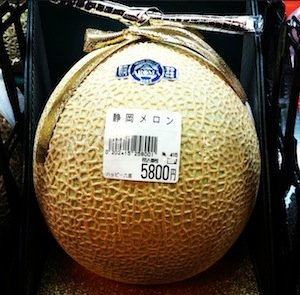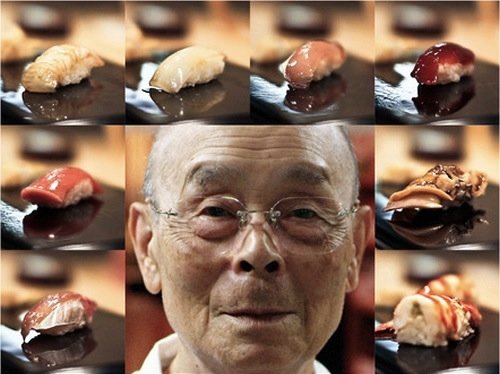see part one
We start with the first Japanese dinner in Japan. Frozen Asahi, an incandescent grill in front of our eyes and a very empty stomach. And then there’s the chicken which, surprisingly, is served rare: in Italy the people from the Asl (the local health authority) would already be tearing their hairs out. The little restaurant is packed and, most of all, this is our first contact with the Japanese way of living: working like crazy only to drink beer like crazy later on... brilliant! And there are many people doing this. Then, if they forget to take the underground, they sleep on benches until the next morning, and then risk repeating the same thing the next day. I recalled myself doing the same: sleeping on a bench in Milan, in the middle of the night, only to be called a homeless, or drinking beer like crazy after work, and being called an alcoholic... If only I could go to Japan every weekend, it would be fantastic.

A very expensive canteloupe from Kyoto
Putting blossoming cherry trees aside, and geishas, and temples and so on, because after all this is
Identità Golose and not the
Lonely Planet, let’s go directly to the dinner we had the following night. We choose to try tempura. We need to go to the best tempura place in Kyoto, inside one of the most ancient
ryokan in town. I learn at this point in our trip to Japan how important are hotel concierges, especially those working in high level hotels: without them it would have been impossible to organise a dinner, booking in many restaurants. Regretfully, I must admit that there is indeed a language barrier: especially on the phone, where it’s impossible to communicate with gestures or using pen and paper.
When we arrive we discover it’s only us, another couple, a geisha and our tempura chef. Unfortunately the geisha is 60 years old so there was no thinking of shibari. I’ve never been a huge tempura fan but an experience like this is useful in order to understand how we should make it: super fresh and super crispy scallops on the outside, still a little raw inside, king prawns, king crab, green beans, mushrooms. Everything is of course prepared with particular care, mastered with calm. Each piece is perfect, cut in a very attentive way, in order to highlight the qualities of each ingredient. Kyoto’s market, a one-kilometre long corridor, has everything that is missing in any other country in the world. There’s everything, including Aritsugu himself preparing the knives! Six hundred euros for a peeling knife but it’s him. There are stalls selling only miso, others selling only ikura, others offering melons for 80 euros!

Unfortunately we cannot stay in the market forever and after a couple of snacks made with squid, anchovies and so on, we move to our second destination, the
Arcana, a hotel lost in the forests of Izu, on the banks of the river, 30 minutes away from the first station and from anything else. The concept is simple: you go into a room, you relax, you enjoy a private
onsen on the room’s private terrace, and then you focus on food. There are great tasting menus, great breakfasts, great bottles of champange, great massages and great sweating in the
onsen. Only a touch different from the
Birkenmeier clinic
attended by Fantozzi.
Tokyo, Tokyo… here we are, at last! We get off the Shinkansen and understand we’ve entered a dream. Sean Connery’s city in the James Bond movie “You only live twice” (1967) has now become the city of “Enter the Void”. This is the city of the Shibuya crossing, in which thousands of people walk together on one side and the other of the street, in which there are neon lit shops where you can buy manga dolls, or dress like Murakami’s animated cartoons. This is the city in which Jiro dreams of sushi, Narisawa composes his creations and Ryugin brings the past into the present. This is the city of the molecular restaurants sponsored by the New York Times on top of the Mandarin hotel…
2. to be continued